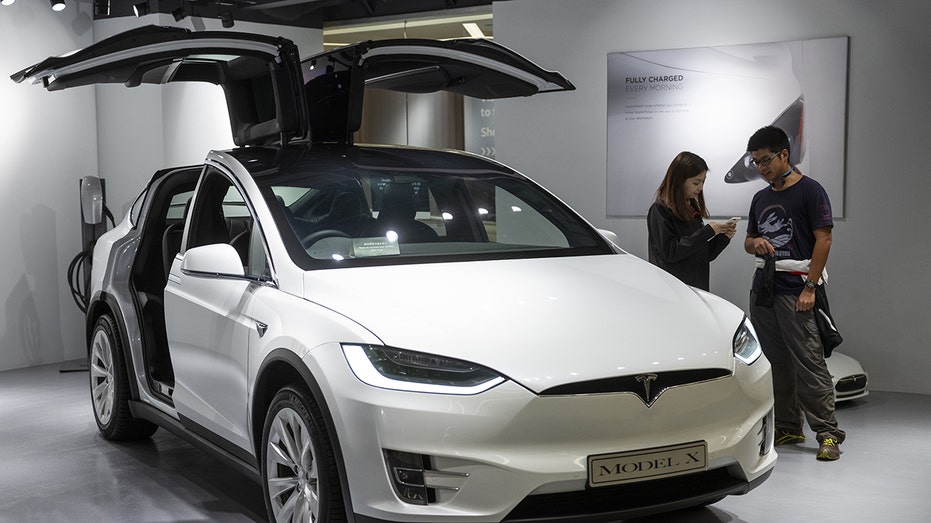Gasoline demand has peaked, global forecaster says: WSJ
IEA says shift to electric vehicles and rising fuel savings will outstrip developing-world demand growth
The world’s thirst for gasoline isn’t likely to return to pre-pandemic levels, the International Energy Agency forecast, calling a peak for the fuel that has powered personal transportation for more than a century.
The Paris-based energy watchdog, in its closely followed five-year forecast, said an accelerating global shift toward electric vehicles, along with increasing fuel efficiency among gasoline-powered fleets, will more than outweigh demand growth from developing countries.
The forecast comes as auto makers have pivoted recently to boost their EV fleets, after years of industry skepticism about whether car buyers would ever embrace fully electric models. General Motors Co. said it would stop selling gas-powered vehicles by 2035. Volvo Cars of Sweden has said it would be all-electric by 2030.
FOXCONN EYES EVS FOR TROUBLED WISCONSIN PLANT, MAY GO WITH MEXICO
Some 60 million electric vehicles will be on the roads world-wide by 2026, the IEA said, up from 7.2 million in 2019. The agency tracks EV trends as a signal for gasoline and crude-oil demand.
The shift toward electric vehicles has been driven by government regulation, hefty incentives in developed countries and broader consumer acceptance of the technology thanks in part to popular models like those sold by Tesla Inc. EVs still make up a small proportion of the world’s overall fleet, and auto makers say they expect to see growing demand for gas-burning internal combustion engines, particularly in the developing world, for years to come.

The world’s thirst for gasoline isn’t likely to return to pre-pandemic levels, the International Energy Agency forecast, calling a peak for the fuel that has powered personal transportation for more than a century. Photographer: Justin Chin/Bloomberg
The coronavirus pandemic has upended global fuel consumption, raising questions about whether it will change the world’s energy mix more generally in the years ahead. Energy watchers have long debated the timing of “peak oil,” a point at which demand for crude will start to wane. Amid the demand-crushing pandemic that started last year, some forecasters, including those at the Organization of the Petroleum Exporting Countries, have said that day might have already dawned in the developed world.
The IEA said Wednesday that it foresees global crude demand recovering, reaching as much as 104 million barrels a day by 2026, up about 4% from 2019 levels, thanks to the developing world. Economic powerhouses such as China, India and other Asian countries would account for 90% of the net increase in oil demand over the coming five years, the agency said.
But for the first time, the agency said it no longer forecasts a complete rebound in demand for gasoline—the product that for years underpinned the world’s thirst for crude.
EV MAKER ELECTRAMECCANICA OPENS NEW ARIZONA FACILITY WHILE ‘RIDING MACROECONOMIC TAILWINDS’
“We do not think gasoline consumption will come back to 2019 levels again,” said IEA Executive Director Fatih Birol.
Global jet fuel demand, meanwhile, would fully return but at a slow pace and not before 2024, the agency said. U.S. air travel has been rising amid stabilizing or falling Covid-19 cases in many parts of the country and an accelerated vaccination drive. The Transportation Security Administration, which tracks how many U.S. travelers pass through airport security checkpoints, recorded 1.4 million passengers on Friday. That marked a one-year high but still less than half comparable numbers in 2019.
During widespread government-imposed restrictions on travel, the IEA said daily gasoline demand dropped by a record 2.9 million barrels in 2020, down more than 10% from the 26.6 million barrels a day burned in 2019.
The uptake of EVs isn’t the only thing driving demand down. The IEA and the U.S. Department of Energy, in a report last month, cited the improving fuel efficiency of gas-burning cars. The U.S. agency said it expects American gasoline consumption in the transportation sector to peak in 2022.
The IEA said global gasoline demand would start to return as economies open back up. But the shift to EVs in richer countries is now accelerating at such a pace that demand shortfalls there are set to outpace expected growth from developing countries like Indonesia, India and China.
GET FOX BUSINESS ON THE GO BY CLICKING HERE
Plug-in electric vehicles accounted for about 4.2% of new car sales last year globally, with sales rising 43% to 3.24 million vehicles, according to ev-volumes.com, a research group that tracks EV sales. In Europe, where EV sales are booming, plug-in electric vehicles accounted for 10.5% of new cars sold in the fourth quarter of 2020.
“E-mobility has won the race,” Volkswagen Chief Executive Officer Herbert Diess told reporters this week while unveiling big new investments in car-battery factories and electric-charging stations.
Battery-powered electric vehicles would account for 50% of Volkswagen’s new car sales globally by 2030, he said, but conventional internal-combustion engine vehicles would continue to dominate in some markets.
“We will keep selling ICEs in some regions longer than in others,” Diess said. “E-mobility will come at different levels of speed globally depending on local policies and the supply of CO2-free energy.”




















